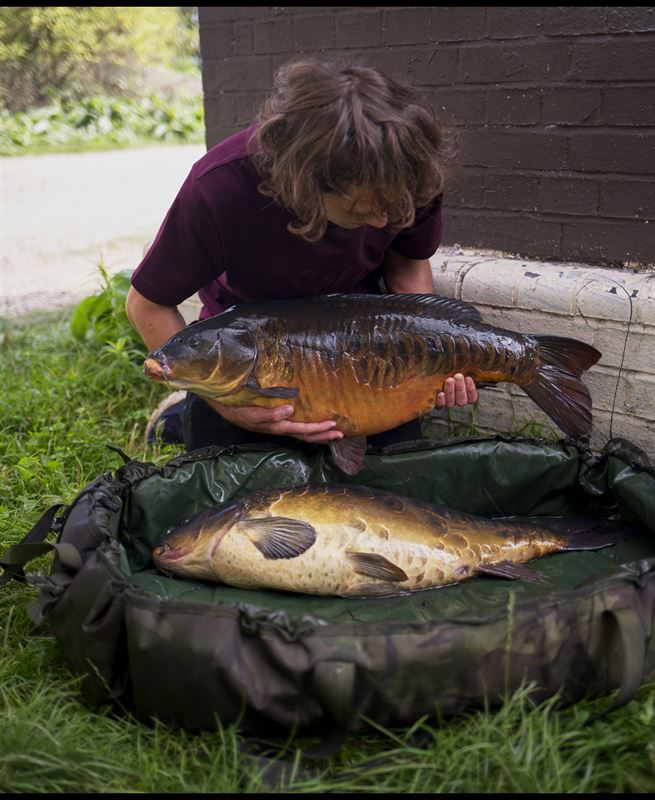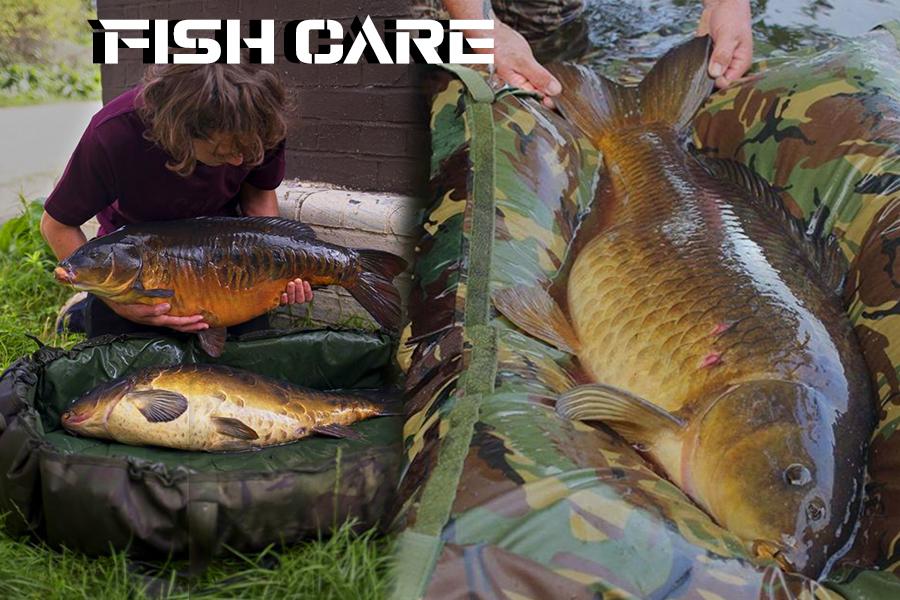Fish Care - Everything you need to Ensure Fish Saftey
Fish Care is very important and there are very good reasons as to why. You're catching fish and releasing them, you want to put as much effort into ensuring they go back in the best condition they possibly can be in. It's essential you're always on top of your game when it comes to fish safety to ensure that no fish gets damaged.
Unhooking Mat / Cradles
Always consider the size of your unhooking mat in relation to the fish you are fishing for. It is pointless fishing for 20lb and 30lb fish if you don't have a mat which is big enough for the fish. If you are fishing for this size of fish you need a well padded and a bigger mat. A 30lb fish thrashing on a thin mat is at risk of causing it'self damage. When you consider the weight of the fish, the bigger the fish the more powerful their thrashes are going to be so ensure your mat is well padded and big enough to hold the fish. Mats like the ESP Quickdraw, Thinking Anglers Mats, Scope Flat Mats are perfect. A mat like the Gardner Lite Mat is suited for smaller carp i.e single digit weights and low doubles. Anything bigger is likely not to be suited for the mat.
If you are in the market for a new mat and need some advice on a mat or a suggestion for a mat suited for your fishing, our staff will happily offer sound advice to ensure you have the right equipment for your angling!

Weigh Sling
Like unhooking mats, you want to ensure your sling is big enough for the fish. This is essential for a sling as if the fish doesn't fit then it's very likely to damage itself in the mat. Slings like this are perfect for bigger fish. If you are in the market for a new sling, consider the size of fish you are fishing for. We are always happy to give advice!

Landing Nets
Ensure you have a landing net big enough for the fish you're catching. Fitting 30lb fish in a 36inch landing net is a task and is not at all good practice for fish care. If you're fishing for 20lb fish or above you need at least a 42inch landing net to ensure there is enough room to safely net the fish. Ensure that the mesh is nice and deep so you can retain the fish in the net by ramming the handle into the lakebed in the margin as well. This will make it easier and quicker to de-attach your rig with the fish in the water meaning you can get that rod back out before sorting your fish out.
Anti-Septic
Carrying around a bottle of carp care is essential when you're fishing. Apply it to any scapes, cuts or general sores on the fish's flank as well as the hook hole. This will help the fish heal and is the best practice for making sure the fish goes back in better condition than what it was when you caught it.
What To Do Once the Fish is In the Net.
Once the fish is in the net there are some things you should do to prevent fish damage. Firstly if you're using quick change swivels, remove the rig from the quick change swivel. This keeps your mainline out of the way and prevents damage from line when moving the fish. I've heard stories of people carrying a fish out still attached to the mainline and then when it thrashes on the mat, the tight mainline acts like a cheese wire and is the perfect recipe for a fish losing a tail from the mainline. If you don't fish with Quick Change Swivels then unhook the fish in the net or cut your mainline / rig.
When resting the fish in a retention sling or in your net, make sure the water isn't too shallow so it isn't going to damage itself against a lake bed or the margin. Rocky margins are dangerous for the fish, ensure that you keep them somewhere away from rocks or stones and in a level of water where the fish can comfortably rest!
